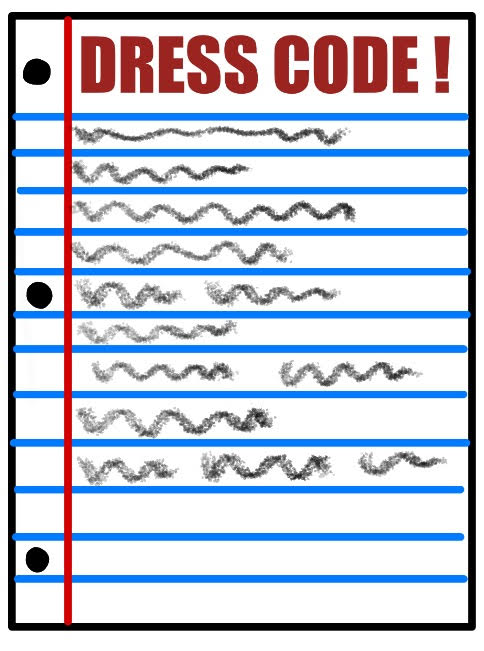Around the US, almost all schools enforce a dress code for students to follow. This is done to generate a positively focused learning environment and impose discipline amongst students. While these rules seem minor and avoid distractions in school, they have an extremely unfavorable impact on students.
While dress code is helpful to regulate what kids wear, some guidelines can be very restrictive and not allow a person to fully express themselves to the extent that they want to. Many people use clothes as a chief way to symbolize who they are and what image they want to portray to others. Not allowing students to properly express themselves brings many disadvantages, such as associating school with discomfort and an unhappy place for students.
Not only do dress code guidelines promote a bleak environment for students, but they also reinforce unequal treatment amongst boys and girls. Dress code policies subjectively target girls through their overbearing rules towards them, while the guidelines for boys are more lenient. This imbalance of policies undermines equality, causing a lack of confidence and an increase in anxiety amongst young girls, as they feel as though eyes are constantly on them, judging them on if they are wearing the “right” thing.
Dress codes are enforced to promote order and a desired image for the school environment, but with each rule, it degrades a person’s confidence in themselves. I mean, let’s face it, school isn’t always the most accepting environment, so when in a circumstance of getting dress-coded, it leads people to feel embarrassed and singled out. Self-esteem is already a characteristic many teenagers struggle with, so the additional burden of struggling to be called out for what they wear during instructional time can bring unwanted stress and anxiety to the person, relating those feelings of unease to school.
Rather than helping the school environment, dress code policies interfere with students’ learning abilities. Students are focusing more on what to wear to school and choosing hallways free from potential dress code violations, rather than on their actual academics. When students are pulled out of class or stopped in the hallways to be forced to change into different clothes, it takes away valuable learning time. The constant disruptions sever the connection kids have to school and steer them to lose motivation and intellectual capacity for work.
The school dress code has a well-thought-out objective, but allows for many concerns towards students, something I think sets it apart to be detrimental to students mentally.


